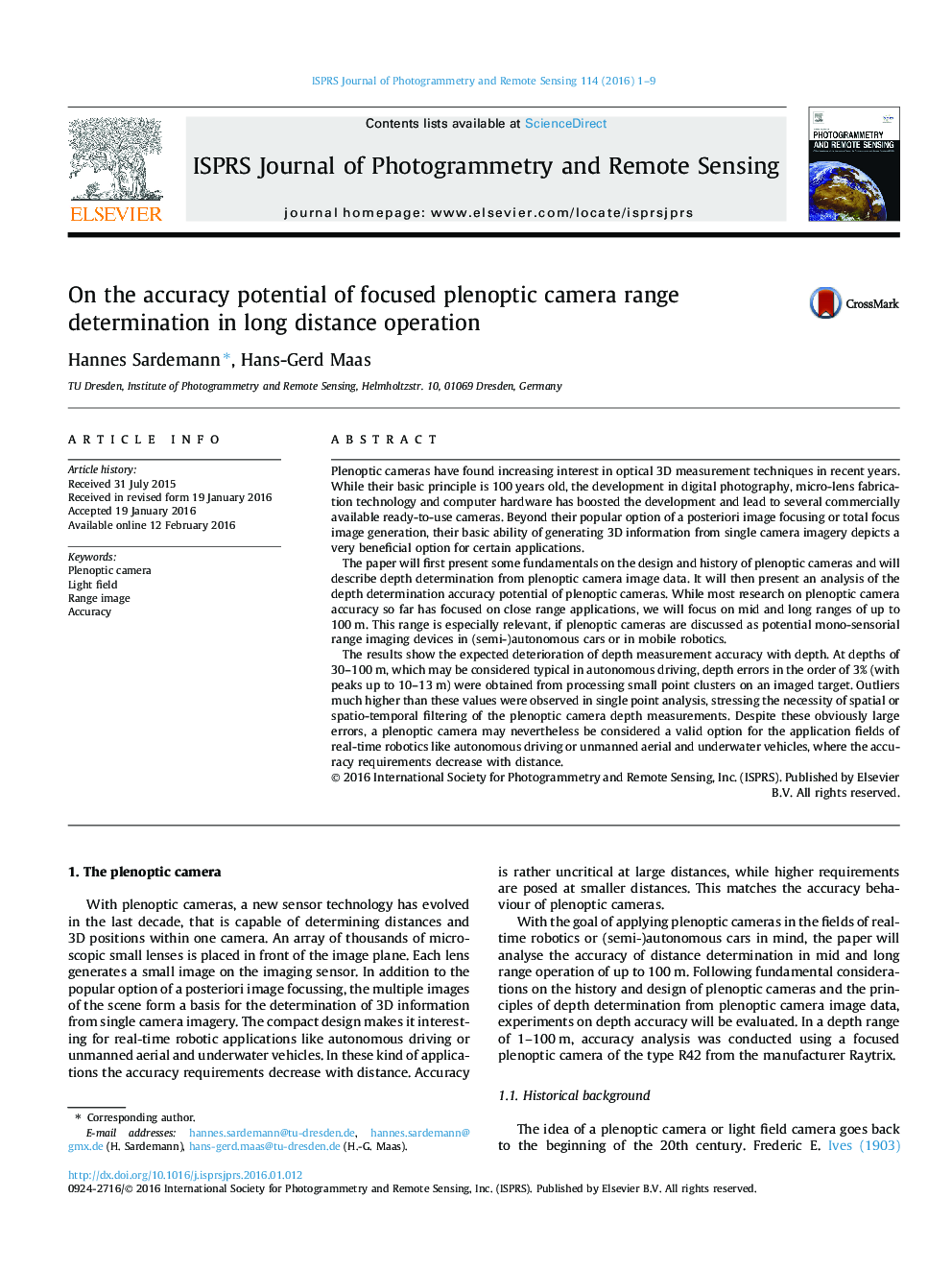| Article ID | Journal | Published Year | Pages | File Type |
|---|---|---|---|---|
| 555860 | ISPRS Journal of Photogrammetry and Remote Sensing | 2016 | 9 Pages |
Plenoptic cameras have found increasing interest in optical 3D measurement techniques in recent years. While their basic principle is 100 years old, the development in digital photography, micro-lens fabrication technology and computer hardware has boosted the development and lead to several commercially available ready-to-use cameras. Beyond their popular option of a posteriori image focusing or total focus image generation, their basic ability of generating 3D information from single camera imagery depicts a very beneficial option for certain applications.The paper will first present some fundamentals on the design and history of plenoptic cameras and will describe depth determination from plenoptic camera image data. It will then present an analysis of the depth determination accuracy potential of plenoptic cameras. While most research on plenoptic camera accuracy so far has focused on close range applications, we will focus on mid and long ranges of up to 100 m. This range is especially relevant, if plenoptic cameras are discussed as potential mono-sensorial range imaging devices in (semi-)autonomous cars or in mobile robotics.The results show the expected deterioration of depth measurement accuracy with depth. At depths of 30–100 m, which may be considered typical in autonomous driving, depth errors in the order of 3% (with peaks up to 10–13 m) were obtained from processing small point clusters on an imaged target. Outliers much higher than these values were observed in single point analysis, stressing the necessity of spatial or spatio-temporal filtering of the plenoptic camera depth measurements. Despite these obviously large errors, a plenoptic camera may nevertheless be considered a valid option for the application fields of real-time robotics like autonomous driving or unmanned aerial and underwater vehicles, where the accuracy requirements decrease with distance.
